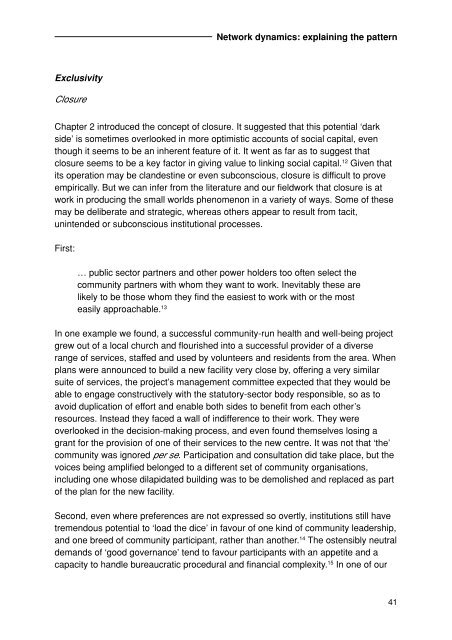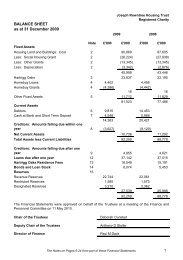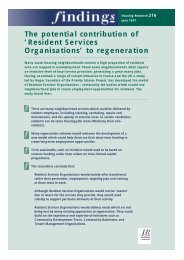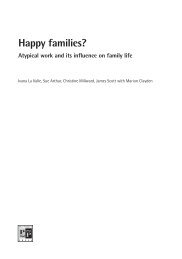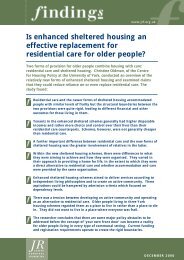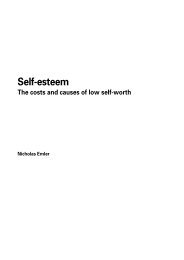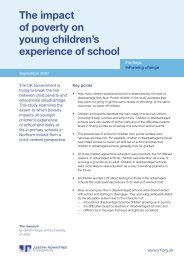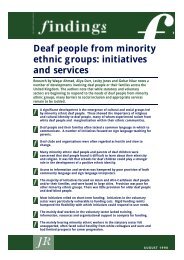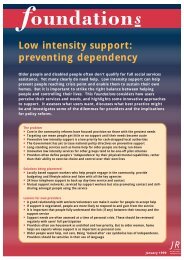Community participation - Joseph Rowntree Foundation
Community participation - Joseph Rowntree Foundation
Community participation - Joseph Rowntree Foundation
Create successful ePaper yourself
Turn your PDF publications into a flip-book with our unique Google optimized e-Paper software.
Network dynamics: explaining the pattern<br />
Exclusivity<br />
Closure<br />
Chapter 2 introduced the concept of closure. It suggested that this potential ‘dark<br />
side’ is sometimes overlooked in more optimistic accounts of social capital, even<br />
though it seems to be an inherent feature of it. It went as far as to suggest that<br />
closure seems to be a key factor in giving value to linking social capital. 12 Given that<br />
its operation may be clandestine or even subconscious, closure is difficult to prove<br />
empirically. But we can infer from the literature and our fieldwork that closure is at<br />
work in producing the small worlds phenomenon in a variety of ways. Some of these<br />
may be deliberate and strategic, whereas others appear to result from tacit,<br />
unintended or subconscious institutional processes.<br />
First:<br />
… public sector partners and other power holders too often select the<br />
community partners with whom they want to work. Inevitably these are<br />
likely to be those whom they find the easiest to work with or the most<br />
easily approachable. 13<br />
In one example we found, a successful community-run health and well-being project<br />
grew out of a local church and flourished into a successful provider of a diverse<br />
range of services, staffed and used by volunteers and residents from the area. When<br />
plans were announced to build a new facility very close by, offering a very similar<br />
suite of services, the project’s management committee expected that they would be<br />
able to engage constructively with the statutory-sector body responsible, so as to<br />
avoid duplication of effort and enable both sides to benefit from each other’s<br />
resources. Instead they faced a wall of indifference to their work. They were<br />
overlooked in the decision-making process, and even found themselves losing a<br />
grant for the provision of one of their services to the new centre. It was not that ‘the’<br />
community was ignored per se. Participation and consultation did take place, but the<br />
voices being amplified belonged to a different set of community organisations,<br />
including one whose dilapidated building was to be demolished and replaced as part<br />
of the plan for the new facility.<br />
Second, even where preferences are not expressed so overtly, institutions still have<br />
tremendous potential to ‘load the dice’ in favour of one kind of community leadership,<br />
and one breed of community participant, rather than another. 14 The ostensibly neutral<br />
demands of ‘good governance’ tend to favour participants with an appetite and a<br />
capacity to handle bureaucratic procedural and financial complexity. 15 In one of our<br />
41


